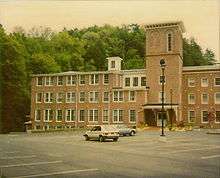Brad Cox

Brad Cox is a computer scientist known mostly for creating the Objective-C programming language with his business partner Tom Love and for his work in software engineering (specifically software reuse) and software componentry.
Biography
Cox received his Bachelor of Science Degree in Organic Chemistry and Mathematics from Furman University,[1] and his Ph.D. from the Department of Mathematical Biology at the University of Chicago.[2] Among his first known software projects, he wrote a PDP-8 program for simulating clusters of neurons.[3] He worked at the National Institutes of Health and Woods Hole Oceanographic Institute before moving into the software profession.[4]
Although Cox invented his own programming language, Objective-C, which he used in his early career, he has stated in an interview for the Masterminds of programming book that he isn't interested in programming languages but rather in software components, and he regards languages as mere tools for building and combining parts of software.[5]
Cox is also an entrepreneur, having founded the Stepstone company together with Tom Love for releasing the first Objective-C implementation. Later, NeXT acquired Objective-C from Stepstone. Objective-C continued to be the primary programming language for writing software for Apple's OS X and iOS.[6]
Awards
- Online course "Taming the Electronic Frontier" won a Paul Allen Distance Education Award ($25,000) in 1998.[7][8]
Notes
- ↑ "(unknown)". Bulletin of the South Carolina Academy of Science. South Carolina Academy of Science. 29-32: 79. 1967.
- ↑ Cox, Brad J. (June 1973). "The potassium diffusion barrier: examined as a mechanism for squid axon adaptation". Univ. of Chicago, Department of Chemistry. Archived from the original on July 20, 2011
- ↑ Cox, Brad; Dzendolet, E. (1970). "Simulation of neural sets". Behavior Research Methods. Springer. 3 (2): 80–82. doi:10.3758/BF03206992. Retrieved March 9, 2011.
- ↑ Bézivin, Jean, ed. (Nov 13–15, 1989). "Contributors". TOOLS '89: Technology of object-oriented languages and systems : Proceedings, CNIT Paris, La Défence, France, November 13-15, 1989. TOOLS: technology of object-oriented languages and systems. Paris: CNIT, La Défence. p. 11
- ↑ http://bradjcox.blogspot.gr/2009/03/masterminds-of-programming-book.html
- ↑ "About Objective-C". Apple Inc. September 17, 2015. Retrieved March 2, 2015.
- ↑ Gibson, David; Aldrich, Clark; Prensky, Marc (eds) (2007). Games and simulations in online learning: research and development frameworks. Hershey, PA: IDEA Group. p. 388. ISBN 978-1-59904-305-0.
- ↑ Krebs, Arlene (1999). Distance learning funding sourcebook. Dubuque, IA: Kendall/Hunt Publishing. p. 4. ISBN 978-0-7872-4980-9.
Books
- Object Oriented Programming: An Evolutionary Approach. Addison Wesley. 1991. ISBN 0-201-54834-8.
- Superdistribution: Objects as Property on the Electronic Frontier. Addison Wesley. 1996. ISBN 0-201-50208-9.
External links
- Belaboring the Obvious - personal blog
- Virtual School (historical)
- Hutchinson, James (June 17, 2010). "The A to Z of programming languages: Objective-C". Computerworld. Retrieved March 9, 2011.